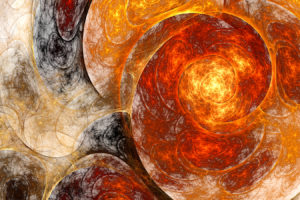4th Quarter | The Color of Thought
Define Description: The Essence of Nuance and Undefinable Artifacts
By Tricia Stewart Shiu
The Color of Thought: The Essence of Nuance and Undefinable Artifacts – Tricia Stewart Shiu
 It’s delicious, isn’t it? The idea of describing an immaterial object with an unusual adjective. Bringing two worlds together. Bridging the continuum. Breaching the darkness.
It’s delicious, isn’t it? The idea of describing an immaterial object with an unusual adjective. Bringing two worlds together. Bridging the continuum. Breaching the darkness.
Normally, sensory experiences are just that, experiences. Pulling away to objectively identify or define, can take away from the complexities and nuances of an otherwise juicy discovery and perhaps even taint the learning experience.
But what happens when an unexpected discovery occurs? One that supports learning, but also offers a not-so-pleasant glimpse into past historical events. How do we process, cull and disseminate the learning, while honoring just how far we’ve come?
After all, we humans evolve and grow for a reason.
ARTISTIC ALLEGORY | LE MOT JUSTE
That’s exactly what has occurred as ancient artifacts have surfaced after remaining hidden for thousands of years.
This phenomenon is most likely, directly connected to global warming and as large sections of the earth’s water sources evaporate, never-before-discovered mummified human remains and artifacts are surfacing.
Several such “artifacts” are thousands of years old, perfectly preserved humans, who met their untimely demise when they were used in human sacrifice rituals.
One example is the Children of Llullaillaco also known as the Mummies of Llullaillaco. They are three Inca child mummies discovered on March 16, 1999, by, National Geographic Society Explorer-in-Residence, a senior research fellow at The Mountain Institute and visiting professor at Catholic University, Salta, Argentina, Johan Reinhard.
Scientists have been astonished at just how well preserved these bodies were. From hair and skin to even more details, these mummified bodies offer a never experienced, unprecedented look into an unimaginable world.
National Geographic says, “Mummy’s hair reveals that young sacrifice victims were heavy users of coca and alcohol in their last years of life.”
It is astonishing to imagine, however, “In Inca religious ideology…coca and alcohol could induce altered states associated with the sacred. But the substances likely played a more pragmatic role as well, disorienting and sedating the young victims on the high mountainside to make them more accepting of their grim fates.”
The artifacts found, adds National Geographic, entombed with the young girl’s remains included: “spondylus shells, brought from the coast, feather headdresses from the Amazon Basin. Statues of gold and silver, adorned with finely woven miniature clothing, were also available only to the highest levels of society.”
 George Santayana said in “The Life of Reason (1905), “Those who cannot remember the past are condemned to repeat it.” However, what if that history is horrific? What if although human sacrifice no longer is a commonplace practice, it is essential to validate and prove the manner of the human’s passing?
George Santayana said in “The Life of Reason (1905), “Those who cannot remember the past are condemned to repeat it.” However, what if that history is horrific? What if although human sacrifice no longer is a commonplace practice, it is essential to validate and prove the manner of the human’s passing?
There will always be doubters about the historical significance of certain events and the importance of creating remembrances to ensure those events will never happen again.
When it comes to gray concerning ancient practices and cultural beliefs there’s no question that we can and should benefit from the learning of others, so we may move forward from tragic circumstances to ensure that they are never repeated.
Those gray areas, though, are the places where we live and breathe and experience presence, even as our past remains unchanged, and our future is uncertain.
It is within the gray areas, where curiosity lives, and the learning potential expands.
Perhaps it isn’t those potential spaces that we have the most to gain. And the nuanced spaces and undefinable events.
Still, when a thought comes to mind, there is always an attachment. The philosophical world connects thought and existence and has for centuries. Moreover, we can spend a lifetime writing, explaining, and defining the linear, concrete, and structured elements of thought, to no avail.
Perhaps, it is a balance between them, that we will finally find the answers we seek as the likelihood of discovering more ancient artifacts increases, over time.






